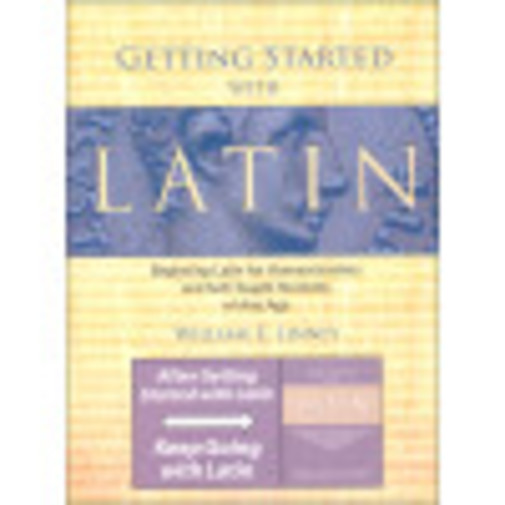We use cookies to make your experience better. To comply with the new e-Privacy directive, we need to ask for your consent to set the cookies. Learn more.
Getting Started With Latin
Subtitled "Beginning Latin for Homeschoolers and Self-Taught Students of Any Age," I could see this book serving as a great introduction to Latin for the family who is not sure they want to jump right into a full-fledged Latin course. Of course, it would be just as useful for an older student (or even Mom and Dad), if they have never studied Latin but want to learn it on their own. The course was designed out of necessity by author William E. Linney, after he was asked by a relative to teach Latin to her children. He set out looking for a course that would not require a Latin teacher, was self-paced, self-explanatory, offered lots of practice exercises, was non-threatening, and inexpensive. When he couldn't find a course that suited his needs, he designed his own. The book contains 134 lessons, which are short (usually less than a page in length), un-fluffy, and incremental in progression. Lessons strike a nice balance between introducing new vocabulary, explaining simple grammatical concepts, and memorization of noun and verb forms. No lesson covers all of these tasks, but instead focuses on one objective and covers it well. Lessons that introduce new Latin vocabulary feature a new Latin word, its English meaning, and sometimes a pronunciation tip. This is usually followed by about ten sentences to translate. Lessons on grammar are also bite-sized, and different forms and cases are introduced gradually. As they are introduced, they are added to a chart, and students will translate sentences that use the forms and cases that they have learned. As charts are filled with endings or forms, students may be asked to memorize them, to aid in future lessons. Just for fun, "Latin Expressions" are scattered throughout the book. In each one, the author takes a common Latin phrase like "caveat emptor," or "etc." and explains the Latin history behind each phrase. Don't underestimate how these little "sparks" of knowledge whet your appetite to learn more! By the end of the book, students will have stockpiled basic vocabulary of around 100 words, be comfortable translating simple sentences in Latin, and have a grasp of basic Latin grammar.
There are a couple of aspects of this course worth noting. First of all, because the book is more of a text than a worktext it is not designed to be consumable. For translation purposes, the author recommends translating the sentences in a separate notebook. If extra practice is desired, you may wish to translate the sentences back to the form given in the lesson. Secondly, while we all realize that pronunciation is very difficult to teach "out of a book", the author has considered this, and has come up with an ingenious solution. He has provided MP3 audio files free of charge on his website, which can be downloaded and used with the lessons. As an added bonus, you can choose from either classical pronunciation or ecclesiastical pronunciation. Audio commentary on the lessons and a host of other helpful resources is also included on the website. Lastly, this course would be excellent prep for an older student who will be studying Latin in high school or college who hasn't had the benefit of laying a basic Latin foundation earlier in life. ~Jess
| Product Format: | Softcover Book |
|---|---|
| Brand: | Armfield Academic Press |
| Author: | William E. Linney |
| Grades: | 4-AD |
| Length in Inches: | 11 |
| Width in Inches: | 8.25 |
| Height in Inches: | 0.375 |
| Weight in Pounds: | 1 |

